Thank goodness our trail mate, Eric, had not told us of the previous year’s trip. In fact, Steve had only sent us pictures of the trip 2 years prior, to be sure to lure us into this. I’m pretty sure that my invitation to Carol would have been met with much less enthusiasm if she’d known the truth about the trip the previous year.
In a nutshell, the previous year’s group was snowed in right after starting and spent the first 2 days in a tiny refugio (a stone hut with a fireplace) while the storm dumped 5 feet of snow on the mountains. They made it, but were forced to push through the rest of the journey in 2 days, in what took us 4 to cross. Eric and Steve related the stories after we got started…and after it was too late to turn back.

Weather in the mountains is unpredictable, even in the summer. We were about to find this out firsthand. After getting up at first light, which is just before 7:00 A.M. in Argentina, I rolled out of bed, visited my favorite boulder, and then found Edgardo and Cristian enjoying a mate by the campfire.
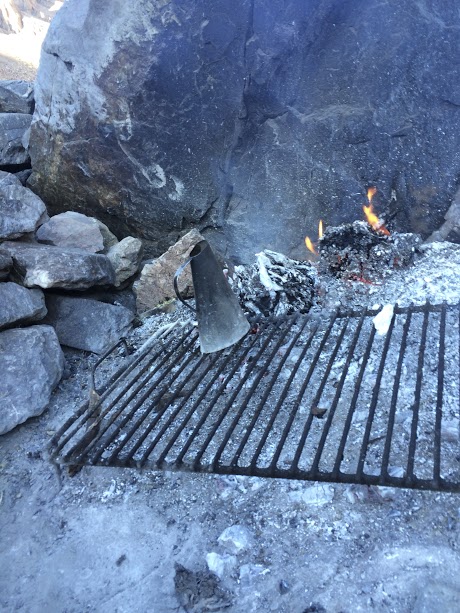
Mate is as much a social experience as it is a caffeine jolt. A gourd is filled with a ground up relative of the holly tree, hot water is poured over it and then it is drunk through a filtered straw made of metal. They refilled the gourd and passed it over to me.
The protocol is that when you are drinking the mate, you don’t stir or move the straw, don’t speak, and drink until you get that slurping sound when you reach the bottom. Then you hand it back to the person filling the gourd and wait your turn to drink again.
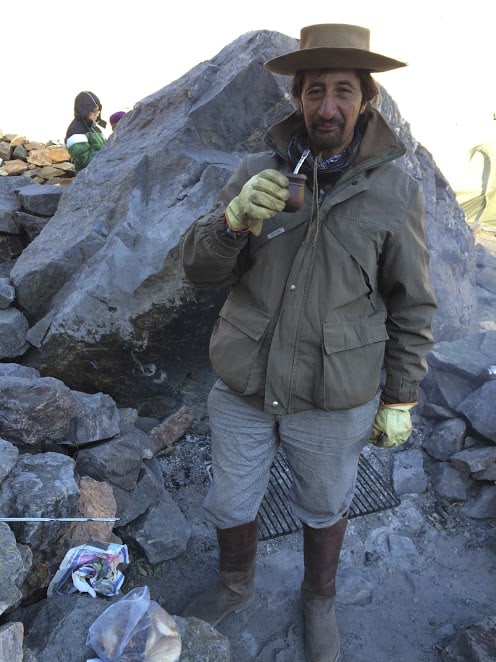
The straw is shared by all and is not wiped or cleaned between uses. I was told repeatedly by Steve and Cora that the silver metal kills the germs and bacteria of previous users. I seriously doubt that and wondered if they were trying to convince themselves. I wasn’t convinced, but truly didn’t care. The mate was great, the company was fantastic, and the germs were welcome to give me more disease-fighting ability in the future. Remember, if it doesn’t kill you, it makes you stronger.
After other folks were up and about, breakfast was served. The tents and gear were then packed and we hit the trail. Departure was planned for around 9:30 or 10:00 A.M. to give the sun a chance to rise above the valley walls and warm the chill that lingers on the valley floor overnight. But we had a schedule to keep to make it over the pass and down into the valley and the refugio by dark. The Notch by noon.
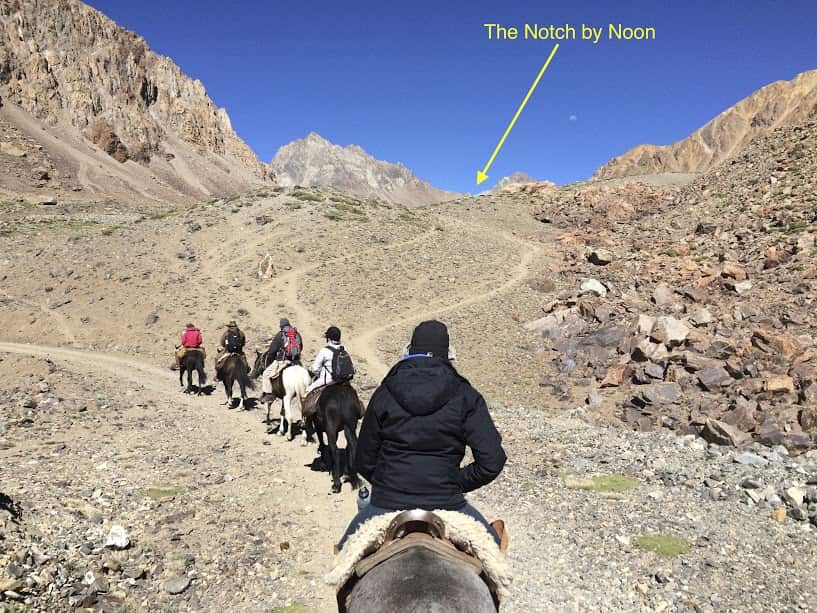

Experience the Insider community that takes your international lifestyle to the next level. Download your FREE guide
"18 Steps to Implementing Your Plan B" instantly!
The ride to the pass was steep and lasted about 3 hours, clearing over 3,000 vertical feet in under 3 miles. The solitude and vast emptiness is staggering, as we saw in our long steady climb up to the high pass.
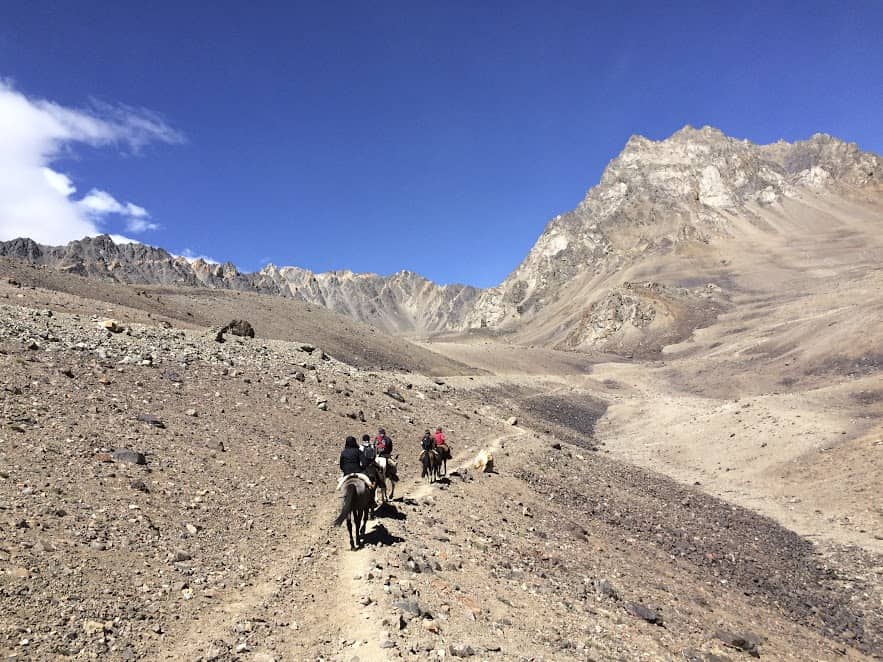
As we neared the top, the switchbacks and loose stones made it a hard going for the horses.
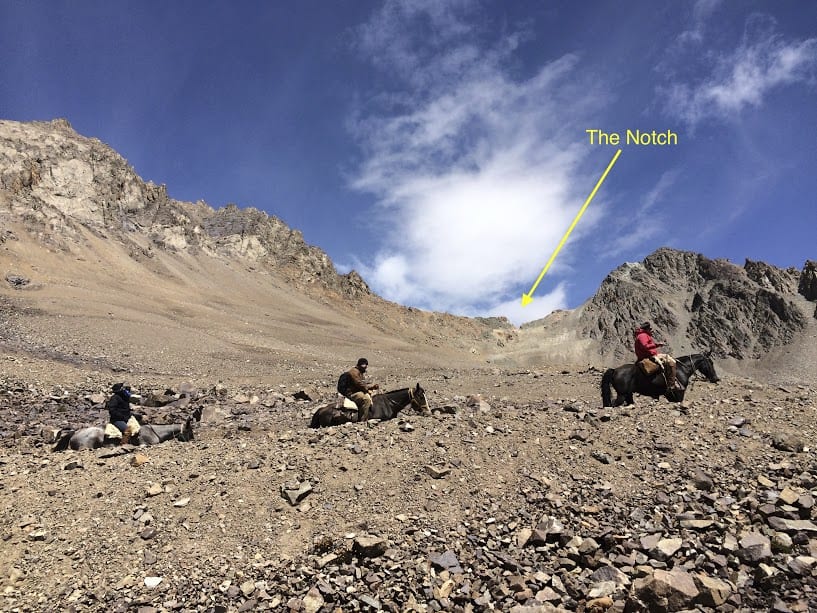
Nearing the small gap and looking back east, the skies were clear and blue.
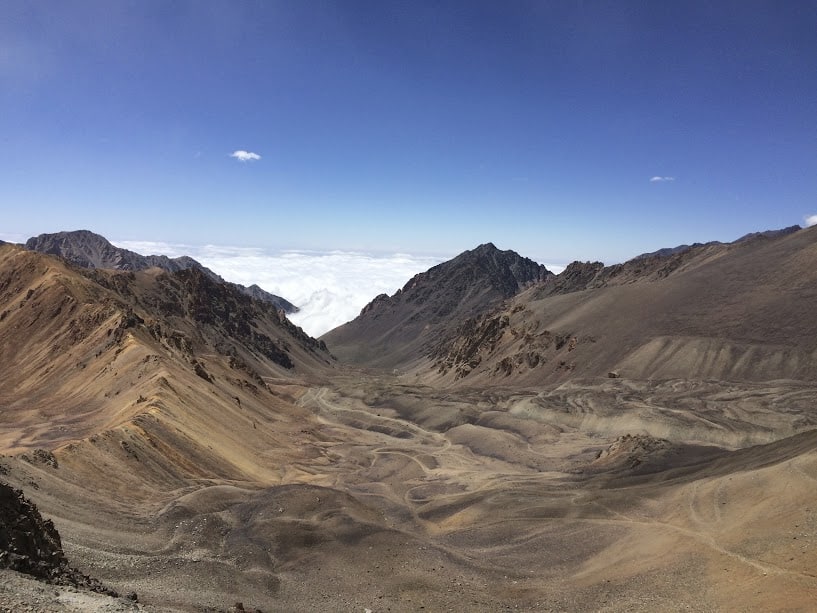
However, the clouds from the other side of the pass continued to build and blow over the tops of the snow-capped ridge. Not a great sign. The pass, the highest point on the trip, is a height of 4,362 meters (14,311 feet). Our ride would then take us down 5,000 feet to the valley floor at 2,877 meters (9,438 feet) for the night.
Once at the gap, we felt the first slaps of snow in our faces. They were hard snow pellets, like being hit in the face with tic-tac candy. Once through the gap, the wind was fierce and exposed skin was tingly in the wind-induced cold. I’m guessing that the actual temps were in the single digits, but wind at 30+ mph made it feel bitterly cold.

We were freezing at the top of the pass. But the good news came once we dropped down about 1,500 feet to the first plateau, where we warmed up to various vices. Carol enjoyed a mate; Cora, some Nicaraguan Momotombo chocolates; and Steve, some Nicaraguan Rum, Flor de Cana. The wind was calmer and the temps considerably warmer. In fact, the rest of the ride, another 4 hours or so, was relatively warm in comparison.
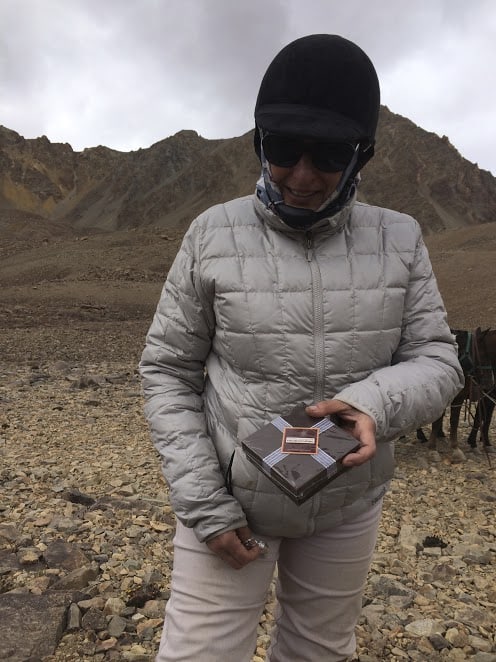

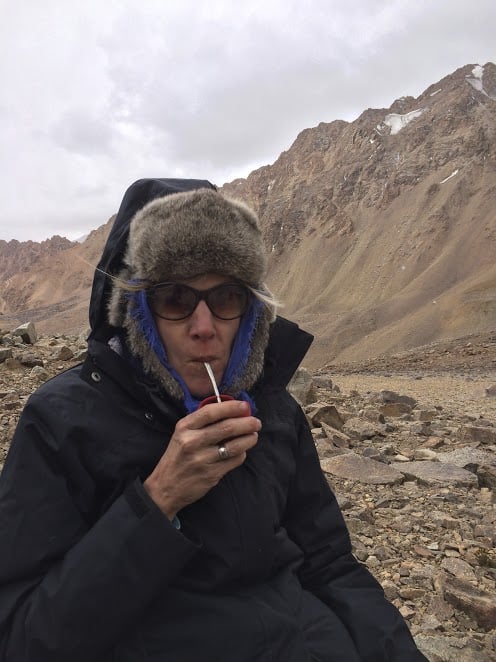
This pass, in fact the entire route that we used on our crossing, was historically used as a cattle crossing to move beef cattle from Argentina to market in Chile. In the 1940s, the trucker’s union in Argentina made it illegal to move cattle to the market in Chile by any other means than truck. A classic example of domestic protectionism that stifles free trade, entrepreneurism, and personal freedom.
But, off my soapbox. The route was used for hundreds of years, and each year as cattle passed through the high pass, many would slip off the narrow trail and plummet to their death in the valley below. There is indeed a pile of bones at the bottom of the first pass, preserved for 75+ years in the dry, cold climate.
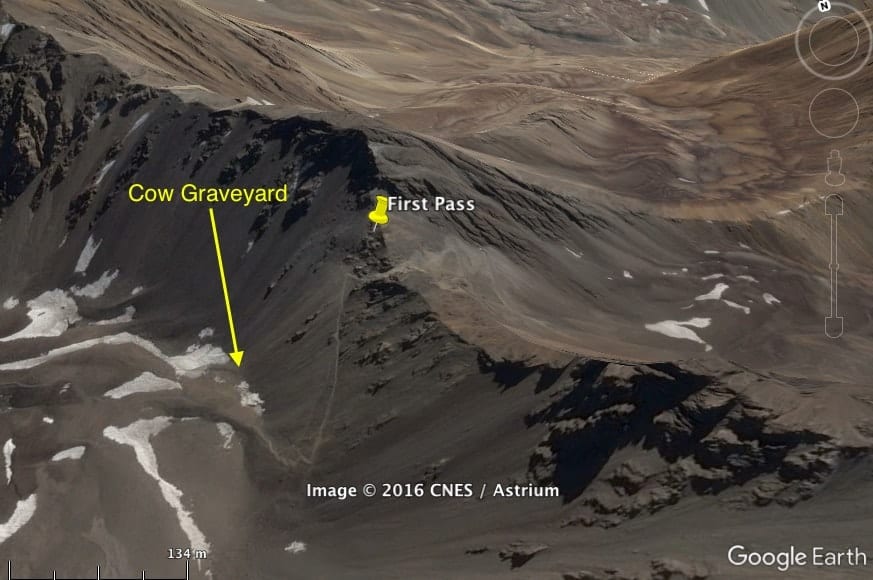

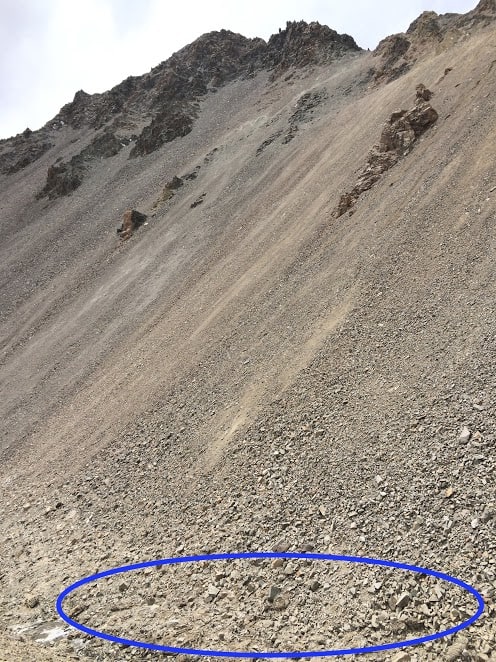
As we rode down the valley, we left the barren rock piles and passed into the grass-covered slopes at the lower altitude. Along the way, Rolo pointed out Guanacos, cousins of the Llama that live in these empty mountains and valleys. It’s hard to imagine what they find to eat, especially in winter. The pickings around us looked pretty sparse, and that’s in the height of summer. Nonetheless, they thrive here and it was fun to watch the herds as they scramble up the mountains to clear a way for our passage. Chirping. Yes, Chirping. Strange sound for a deer like animal to make.
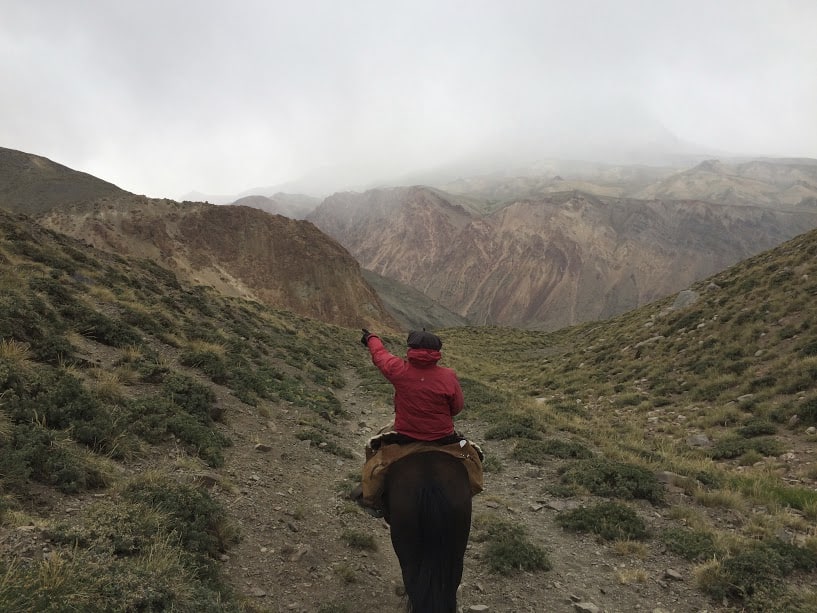
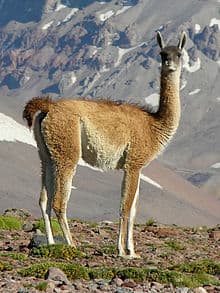
Picture of Guanac, Countesy of Wikipedia
Shelter is a wonderful thing and has now been added to my litany of things I thank God for each day in my prayers. It is something I know I took for granted. After a long day in the clouds and snow, we were all cold, tired, and ready to be inside. Grateful for shelter of any kind at that point.

Seeing a flag that signals the refugio is near is a welcoming site.
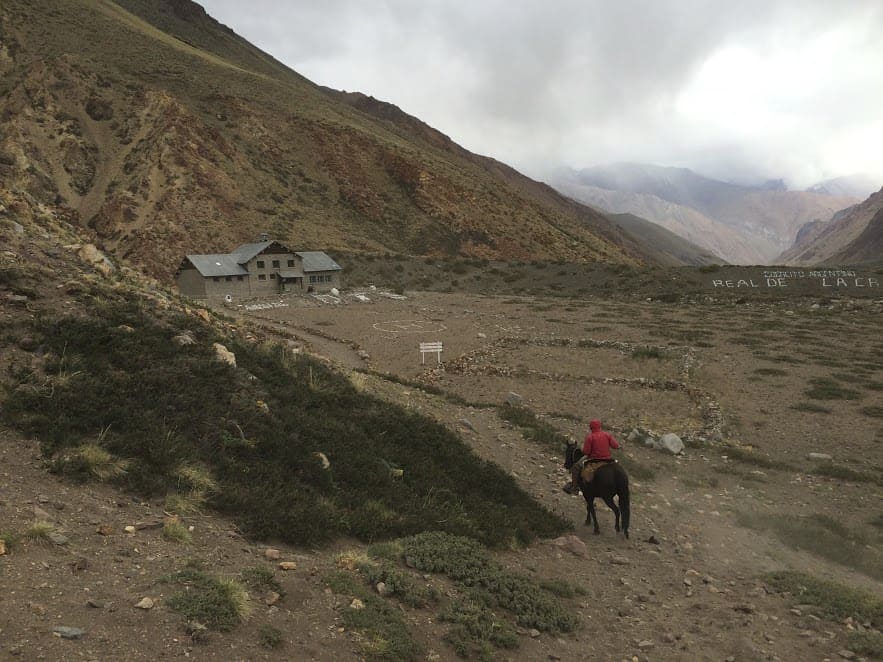
A refugio is a stone building that will break the fierce wind and is a welcome comfort indeed. This one, the Real de la Cruz, is an army outpost that can be reached in only three ways: by foot, by helicopter, and by horse.
Our horses sense they are near too, and mine begins to trot. Everyone is excited to be finished with a long day crossing the high pass. We rode into the valley and to our home for the next 2 nights. The refugio at last!
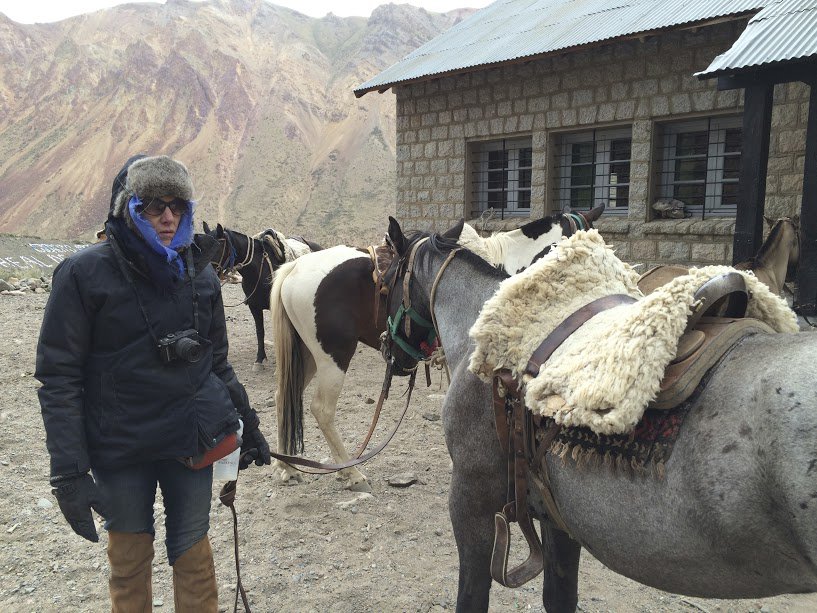
 Michael K. Cobb is the CEO and co-founder of ECI Developments which has properties throughout Latin America. He speaks all over the world on international real estate and is a board member of the National Association of Realtors.
Michael K. Cobb is the CEO and co-founder of ECI Developments which has properties throughout Latin America. He speaks all over the world on international real estate and is a board member of the National Association of Realtors.
Like Our Articles?
Then make sure to check out our Bookstore... we have titles packed full of premium offshore intel. Instant Download - Print off for your private library before the government demands we take these down!








